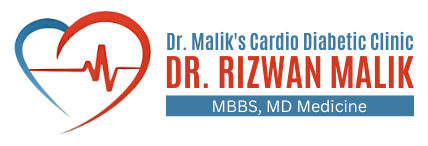Prediabetes is a warning sign that your blood sugar levels are higher than normal but not yet high enough to be classified as type 2 diabetes. This condition affects millions of people worldwide, including a large population in India.
The good news? Prediabetes is reversible with timely intervention, lifestyle changes, and proper management. If left unchecked, it can progress to full-blown diabetes, leading to severe complications such as heart disease, kidney failure, nerve damage, and vision problems.
In this blog, we’ll explore:
✔ Early symptoms of prediabetes
✔ Risk factors and causes
✔ How to reverse prediabetes naturally
✔ Best dietary and lifestyle changes
✔ Frequently asked questions (FAQs)
What is Prediabetes?
Prediabetes means your blood sugar levels are elevated but not high enough for a diabetes diagnosis. It is a critical stage where early detection and intervention can prevent type 2 diabetes altogether.
💡 Prediabetes Blood Sugar Levels:
📌 Normal: Fasting blood sugar <100 mg/dL
📌 Prediabetes: Fasting blood sugar 100–125 mg/dL
📌 Diabetes: Fasting blood sugar ≥126 mg/dL
Early Symptoms of Prediabetes
Prediabetes often does not show obvious symptoms, which is why it is frequently undiagnosed. However, some warning signs can indicate insulin resistance and high blood sugar levels.
1. Increased Thirst & Frequent Urination
- High blood sugar draws water from tissues, causing dehydration and increased thirst.
- This leads to frequent urination, especially at night.
2. Unexplained Fatigue
- High blood sugar prevents glucose from entering cells, leading to energy depletion.
- You may feel constantly tired or sluggish even after resting.
3. Increased Hunger (Polyphagia)
- Cells struggle to absorb glucose properly, leading to constant hunger.
- This often results in overeating and weight gain.
4. Blurry Vision
- Fluctuating blood sugar levels affect fluid balance in the eyes, causing temporary blurry vision.
5. Dark Patches on the Skin (Acanthosis Nigricans)
- Velvety, dark patches appear on the neck, armpits, elbows, and knuckles.
- This is a sign of insulin resistance and is common in prediabetes.
6. Slow Wound Healing
- High blood sugar affects circulation, leading to delayed healing of cuts and wounds.
7. Tingling or Numbness in Hands and Feet
- Prediabetes can cause nerve damage (neuropathy), leading to tingling, burning, or numbness.
💡 Key Takeaway: If you experience any of these symptoms, get your blood sugar tested immediately.
Risk Factors and Causes of Prediabetes
Several factors contribute to prediabetes and insulin resistance.
1. Unhealthy Diet
- Excess consumption of sugar, processed foods, and refined carbohydrates leads to insulin resistance.
- Low fiber intake worsens blood sugar control.
2. Sedentary Lifestyle
- Lack of physical activity reduces insulin sensitivity.
- Sitting for long hours increases visceral fat, a major risk factor for diabetes.
3. Obesity (Especially Belly Fat)
- Abdominal fat releases inflammatory substances that reduce insulin effectiveness.
- A waist circumference >90 cm (men) and >80 cm (women) increases the risk of prediabetes.
4. Genetics & Family History
- Having a parent or sibling with diabetes increases the likelihood of developing prediabetes.
5. Hormonal Disorders
- Conditions like PCOS (Polycystic Ovary Syndrome), Hypothyroidism, and Cushing’s syndrome contribute to insulin resistance.
6. Sleep Deprivation & Stress
- Chronic stress and poor sleep patterns increase cortisol levels, leading to blood sugar imbalances.
How to Reverse Prediabetes Naturally
Reversing prediabetes is completely possible with lifestyle modifications.
1. Eat a Low-Glycemic, Fiber-Rich Diet
✔ Increase whole grains, legumes, vegetables, and nuts.
✔ Avoid white rice, white bread, processed snacks, and sugary drinks.
✔ Include healthy fats like olive oil, flaxseeds, and avocados.
✔ Consume lean proteins (chicken, fish, paneer, tofu, eggs) for muscle health.
2. Exercise Regularly
✔ 30–45 minutes of moderate exercise daily (walking, jogging, swimming, cycling).
✔ Strength training (2–3 times a week) improves muscle insulin sensitivity.
✔ Avoid sitting for long hours—stand up and stretch every 30 minutes.
3. Maintain a Healthy Weight
✔ Losing 5–10% of body weight significantly lowers diabetes risk.
✔ Reduce visceral fat (belly fat) through exercise and portion control.
4. Manage Stress & Improve Sleep
✔ 7–9 hours of quality sleep improves insulin sensitivity.
✔ Meditation, yoga, and deep breathing exercises help reduce cortisol levels.
5. Stay Hydrated
✔ Drink 2–3 liters of water daily to flush out excess glucose.
✔ Replace sugary sodas with herbal teas and infused water.
6. Monitor Your Blood Sugar Levels
✔ Regular fasting blood sugar and HbA1c tests track progress.
✔ Home glucose monitors help keep blood sugar in check.
💡 Consistency is key! Following these steps for 3–6 months can reverse prediabetes naturally.
Prediabetes is a wake-up call that should not be ignored. Early detection and lifestyle changes can prevent type 2 diabetes and improve overall health.
✔ Be aware of early symptoms like fatigue, excessive thirst, blurred vision, and increased hunger.
✔ Adopt a healthy diet, exercise regularly, manage stress, and track your progress.
✔ Take action today! Small steps now can make a huge difference in the long run.
If you suspect you have prediabetes, consult a doctor or endocrinologist for proper diagnosis and guidance.
FAQ
1. Can prediabetes be completely reversed?
👉 Yes, with the right diet, exercise, and lifestyle changes, prediabetes can be reversed within a few months. However, regular monitoring is essential to prevent recurrence.
2. What are the best foods to reverse prediabetes?
👉 Leafy greens, berries, nuts, whole grains, lean proteins, and healthy fats help regulate blood sugar levels. Avoid processed foods, excess sugar, and white flour products.
3. How long does it take to reverse prediabetes?
👉 On average, 3–6 months of consistent lifestyle changes can significantly improve blood sugar levels. However, individual results may vary based on age, metabolism, and adherence to healthy habits.
